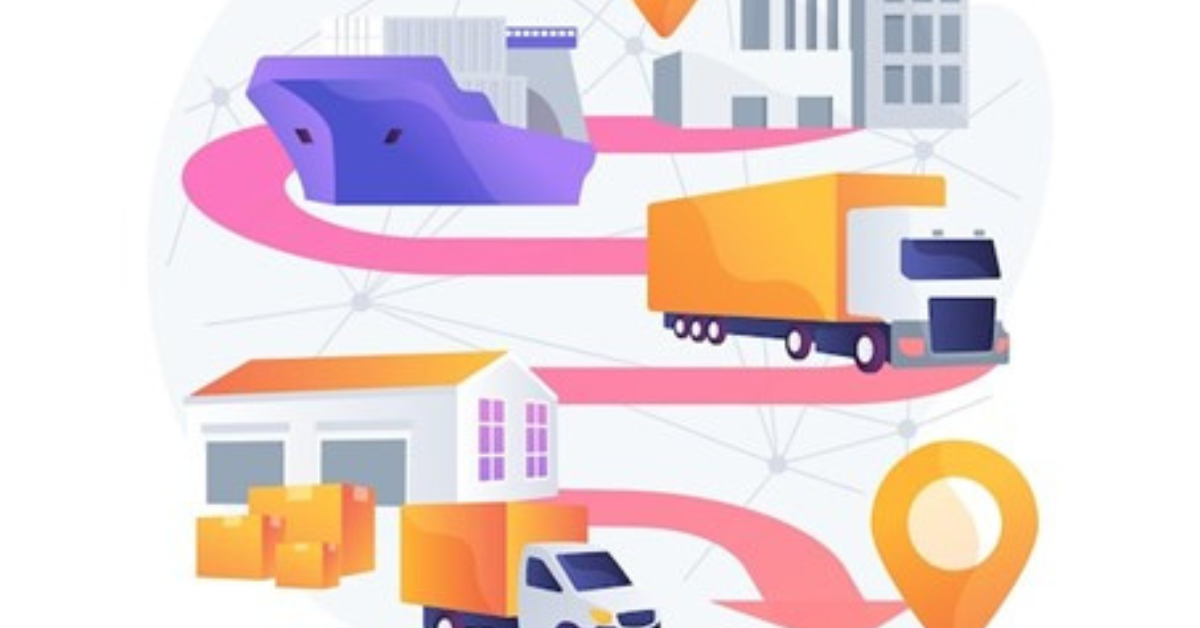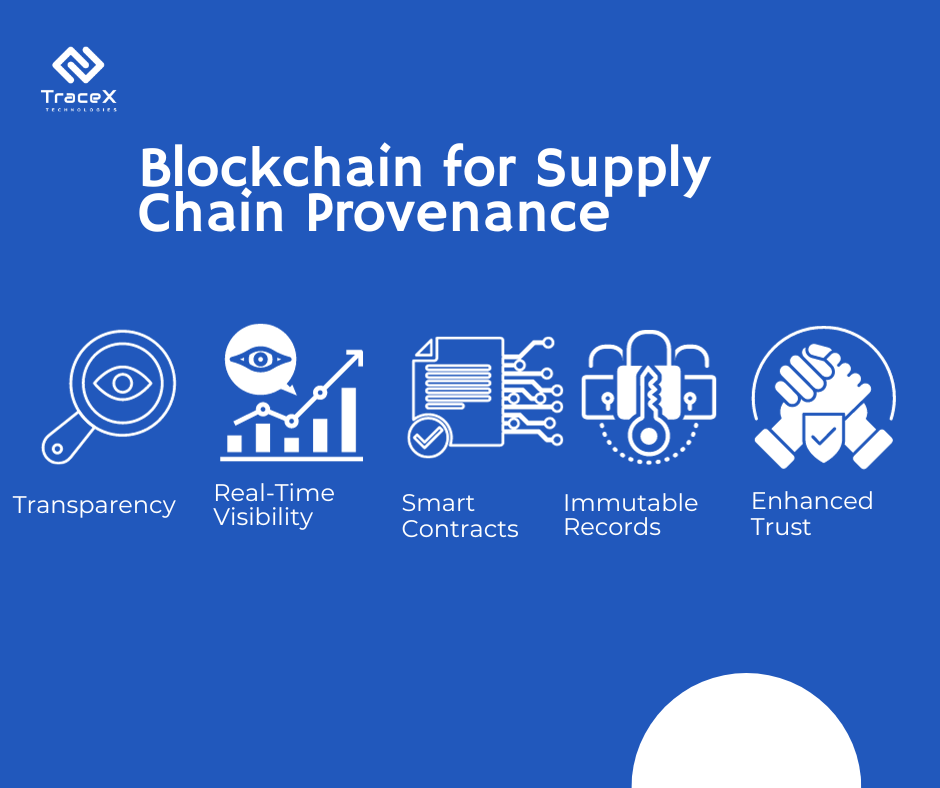Contact: +91 99725 24322 |
Menu
Menu
Quick summary: Explore the five essential elements of supply chain provenance in our latest blog. Discover how transparency, traceability, authenticity, trust, and sustainability combine to build a robust supply chain.

In today’s interconnected world, where goods are produced and transported across the globe, supply chain provenance has gained paramount importance. It is more than just knowing the source of a product; it’s about establishing trust, ensuring quality, and safeguarding the integrity of the supply chain.
According to a report by WWF, Consumers are changing their behaviour, with searches for sustainable goods increasing globally by 71%. Supply chains are global and interconnected, and there are growing efforts to apply sustainability requirements from start to finish.
Supply chain transparency is a must for modern businesses, but can you trust that your products are genuinely traceable? If you’re concerned about the authenticity of your supply chain data or want to ensure it’s not tampered with, the last thing you need is a lack of transparency. So, can you rely on supply chain provenance? With TraceX blockchain traceability solutions, you can trust that your supply chain data is secure, transparent, and tamper-proof, ensuring the authenticity of your products and processes. In this blog, you’ll discover how TraceX’s blockchain solutions bring reliability and transparency to supply chain provenance, so you can confidently trace your products’ journey from start to finish.
Supply chain provenance is the art of tracing a product’s origins and its journey along the supply chain. In our modern, intricate, and interconnected supply chain landscape, it has taken on a new level of importance.
In a world where globalized supply chains have brought both opportunities and challenges, the risk of counterfeit and fraudulent products infiltrating the market is on the rise. This is where supply chain provenance steps in as a powerful solution.
For companies, an intelligently designed supply chain provenance strategy is more than risk mitigation; it’s a trust-building tool. By ensuring the integrity of their products and their journey to the market, companies nurture trust and confidence among their customer base.
Serialization stands as the fundamental pillar of traceability within supply chains. It is the process of assigning a unique identifier or code to each product, ensuring that each item is distinguishable from every other in the chain. This unique identification enables precise tracking and tracing, essentially providing each product with its own digital fingerprint.
Role of Serialization: Serialization is pivotal in ensuring that every product can be accurately tracked at every juncture in the supply chain. This is not only crucial for verifying authenticity but also for preventing counterfeiting and facilitating swift recalls if and when necessary.
Implementation and Technology Examples for Serialization: Serialization often entails the use of various technologies such as barcodes, QR codes, or RFID (Radio-Frequency Identification) tags. These technologies enable data collection and sharing throughout the supply chain, enhancing efficiency and transparency.
In the context of supply chain provenance, product characteristics refer to the specific details that describe a product’s unique attributes, quality, and condition. These characteristics go beyond merely describing a product’s physical appearance; they encompass critical information such as size, weight, composition, and even the date of manufacture.
Importance of Capturing Detailed Product Characteristics: Comprehensive product characteristics are essential for quality control, authenticity verification, and ensuring that the product meets the specified standards. In essence, they offer a granular view of the product’s attributes.
Real-World Examples of Product Characteristics in Supply Chain Provenance: For example, in the food industry, capturing product characteristics such as the temperature at which a product is stored, its expiration date, and its ingredient composition is critical to ensure food safety, quality, and compliance with regulatory standards. This data is tracked and monitored throughout the supply chain to maintain product integrity.
Marking, as the term suggests, involves the use of various methods to physically label products. These labels typically contain unique identifiers, such as barcodes, QR codes, or RFID tags, which facilitate the identification and tracking of products.
Exploring the Use of Marking Methods: Marking plays a pivotal role in the physical tracking of products. It ensures that the data associated with a product can be quickly and accurately accessed, even when the product is on the move.
Benefits of Marking in Supply Chain Tracking: Marking technology allows for real-time data capture, enhances inventory management, and simplifies order processing. It enables accurate product identification and ensures seamless communication throughout the supply chain.
Case Studies Showcasing Successful Marking Implementations: Companies like Amazon have successfully employed marking technologies to manage their extensive inventory and enhance the speed and accuracy of order fulfillment. These markings enable efficient product tracking and retrieval within large warehouses and distribution centers.
Comprehensive product data is the bedrock of supply chain provenance. It goes beyond a simple serial number or barcode and encompasses a wealth of information about the product’s origin, history, and characteristics.
The Value of Comprehensive Product Data in Provenance: Rich product data ensures greater transparency and traceability throughout the supply chain. It empowers consumers to make informed choices, safeguards the authenticity and quality of products, and ensures compliance with regulatory and quality standards.
Technologies and Strategies for Effective Product Data Management: Managing vast amounts of product data efficiently requires specialized tools such as Product Information Management (PIM) systems and data analytics. These tools facilitate data storage, retrieval, and analysis, supporting the complex task of managing product data.
Demonstrating the Impact of Rich Product Data on Traceability: For instance, in the fashion industry, detailed product data can trace the origin of a specific garment, from the cotton field where the raw material was sourced to the final sewing machine that assembled it. This not only enhances transparency but also promotes ethical sourcing practices and ensures product authenticity.
Tamper protection is a critical security element within supply chain provenance. It focuses on safeguarding products from tampering, unauthorized access, or manipulation throughout their journey within the supply chain.
Did you know?
According to a study by Incopro, 52% of consumers who bought a counterfeit product from a brand reportedly lost trust in that brand!
Defining Tamper Protection and Its Role in Supply Chain Security: Tamper protection technologies and techniques are designed to detect and deter any attempts to alter or compromise a product’s integrity. These measures help maintain the authenticity and quality of products, ensuring that they reach consumers in their intended condition.
Technologies and Techniques for Tamper-Evident Packaging: Tamper-evident packaging solutions, such as seals, holograms, and packaging materials with security features, are commonly used to deter tampering. These visual and physical cues serve as indicators, immediately revealing if a product has been tampered with during transit.
Case Examples Highlighting the Importance of Tamper Protection: In the pharmaceutical industry, tamper-evident packaging is essential to ensuring the safety and authenticity of medications. Any breach of packaging integrity is readily apparent, preventing potential harm to consumers and protecting brand integrity.
The incorporation of these five elements into supply chain provenance offers a myriad of benefits:
While these five elements hold immense promise, they are not without challenges:
Blockchain technology has emerged as a game-changing solution in the realm of supply chain provenance. It offers a decentralized and secure ledger for tracking products at every stage of the supply chain. Blockchain provides an immutable record of transactions, enhancing transparency, traceability, and data security.
Moreover, such a framework can significantly boost consumer confidence in their purchases by furnishing a transparent record of a product’s journey throughout the supply chain.
TraceX’s blockchain traceability solutions contribute to supply chain provenance by creating transparency, real-time monitoring, automation, data security, and increased trust, making it a valuable asset for businesses looking to bolster their supply chain provenance strategy.

Supply chain provenance is not just about knowing where a product comes from; it’s about ensuring safety, quality, and trust throughout the supply chain. Serialization, product characteristics, marking, rich product data, and tamper protection are the quintessential elements that make this possible. Embracing these elements can transform supply chains, enhance consumer confidence, and protect businesses from the pitfalls of counterfeit products and quality control issues.
With the advent of innovative technologies like blockchain and ongoing advancements in data management, the future of supply chain provenance is brighter than ever. It promises a world of safer and more trustworthy products, where consumers can make informed choices and trust that the products they purchase are of the highest quality and authenticity. Supply chain provenance is not just a concept; it’s a practical solution that ensures the integrity of the global supply chain.
